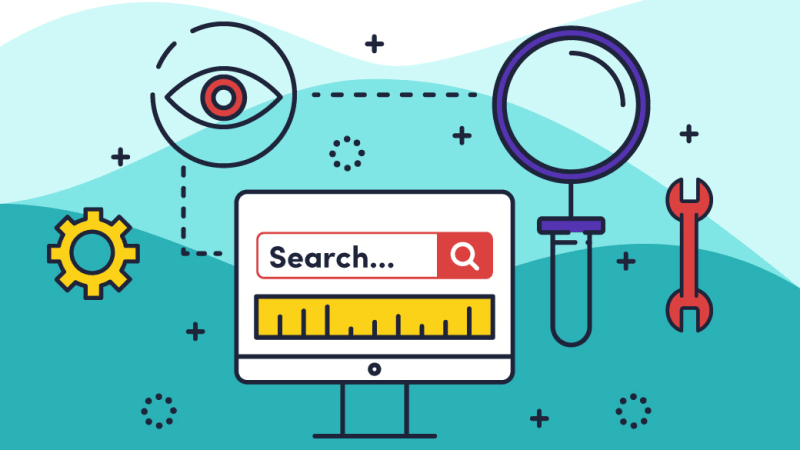Digital Marketing 6 Steps to Create a Data-Driven Marketing Plan
Andrea Robbins — March 23, 2018

We are excited to announce that we are now hosting guest bloggers we believe will bring great insight and knowledge to our readers with their expertise on digital marketing and web development.
First up is Campaign Monitor, an easy-to-use, professional-grade email marketing and automation tool for today’s fast-growing businesses. Email marketing is sort of their thing, so let them tell you how to create a data-driven marketing plan in 6 easy steps.
Have you heard the term “data-driven marketing” tossed around lately? This marketing buzzword is gaining a lot of traction in the industry as more marketers want to maximize value.
But, what is data-driven marketing? Why should you care about it? And, how do you create a data-driven marketing plan?
Simply put, data-driven marketing is the use of customer information to create tailored, relevant campaigns that customers respond to. Data is collected and analyzed with the intent of fine-tuning campaigns and targeting the right customers to maximize your ROI.
We’re here to share the 6 steps to creating a data-driven marketing plan.
Why should you care about data-driven marketing?
Data-driven marketers get results. That’s why data-driven marketing is more than a buzzword. Marketers that are collecting and analyzing data see real results.
They’re able to identify key customer segments, understand what they want, and deliver a tailored message that results in a sale.
Data-driven marketing gives marketers the power to see what efforts are working. It’s an attributable-kind of marketing that connects a certain campaign (sometimes even a certain piece of marketing collateral) directly to sales. Knowing that marketers have access to repeatable marketing tactics.
6 steps to create a data-driven marketing strategy
1. Pay attention to metrics on marketing platforms
As a marketer, you’re undoubtedly using marketing platforms to reach customers. These platforms–from social media dashboard, to email marketing platforms, to analytics tools–always offer data and analytics for you to parse.
To start, look at this data. Really look at it. Look for trends. Are subscribers more responsive to your emails on a certain day of the week? Are your Facebook fans more engaged when your posts include pictures?
See what kind of conclusions you can draw from the analytics provided on the channels you already use.
Take some time to link your platforms to Google Analytics, too. By doing so, you won’t have to bounce from one dashboard to another and you’ll have access to more in-depth data. It’s a free tool, so get yourself set up with an account so you can track data more effectively.
2. Understand common objectives and challenges of data-driven marketing
Putting a data-driven marketing strategy into place can lead to great campaign results, but there are challenges to it.
As you work to create your own strategy, it’s important to understand how others view data-driven marketing. Campaign Monitor and Ascend2 surveyed B2C customers to see how marketers are dealing with this fairly new marketing phenomenon.
The findings are presented in this infographic:
3. Get a baseline and set goals
As you might expect, data-driven marketing offers a lot of stats. There are numbers everywhere. To be successful, you’ll need a plan.
So, get a baseline. See how your current marketing efforts are doing right now and document them for a baseline. For instance, if you’re sending a quarterly newsletter, what’s your average open, click, and conversion rate? Have you run PPC ads? What are their response rates?
Set up a Google Spreadsheet, list every marketing tactic you’re currently using and provide a baseline for using the metrics you have.
Now, take some time to add goals to that same spreadsheet. Keep your goals realistic, but specific. In other words, set a goal to increase your newsletter open rate by 3-5% next quarter.
Make a plan to check-in on these goals on a regular basis. Consider adding a calendar reminder each quarter or each month as a reminder to review your goals.
4. Set up data collection at every touch point
It goes without saying that data-driven marketing requires one thing: data. Your marketing platforms do provide some valuable pieces of information, but if you’re going to be a real player in this field, you have to collect your own data.
Any time a customer interacts with your brand is an opportunity to collect at least one piece of data. When a customer buys something at your store, you can ask for an email address; when an email subscriber buys a product, a follow-up survey can collect additional feedback; when a customer signs up for a webinar, require him or her to fill out a form that asks for their job title and location.
Take some time to figure out where you can collect data and find the tools necessary to make it happen.
5. Use the data to build customer personas
As data rolls in, use it to build customer personas or profiles that will give you an in-depth look at your audience and the segments that make it up.
Some marketers rely on CRM (customer relationship management) software to accomplish this, like Salesforce. Data streams into the software and can attach specific characteristics or feedback to groups or individual customer profiles.
If you’re not using a CRM, as they are costly, consider using a customer persona tool like Xtensio. You’ll have to do more manual data entry, but it’s a good way to store and organize data.
6. Run tests and improve campaigns
Keep your marketing efforts running as usual, but make sure you’re running tests. So many marketers skip the testing phase and assume they know what their audience wants. Don’t make assumptions. Run tests and use the data to improve your campaigns.
Testing can help you create messages that customers respond to, so don’t skip this step. If you’re running an email campaign, for example, test different subject lines, various images, or tweak your CTA.
Use test results to inform your overall marketing strategy. For instance, if a test shows subscribers respond best to a button CTA over a hyperlink, make the change for this campaign and future ones.
Wrap up
Data-driven marketing isn’t a fad, it’s a new way of approaching marketing that can provide better results. As you take steps to improve your data collection and analysis, remember, making this change will take some time. You’ll encounter a few hurdles, but working toward a strategy that’s fueled by statistics is a wise move.
Andrea Robbins is a Content Marketing Manager at Campaign Monitor. She loves a good cup of coffee and spending time outdoors. Keep up with her on Twitter @andirobz




